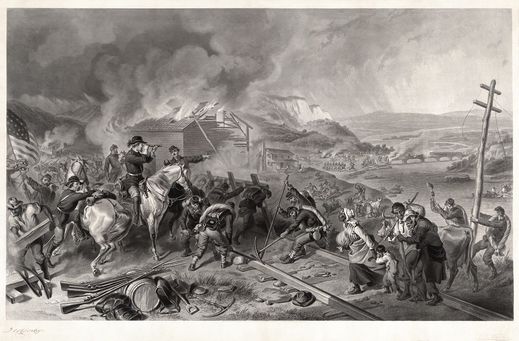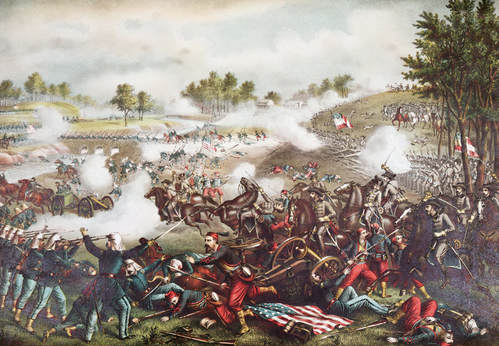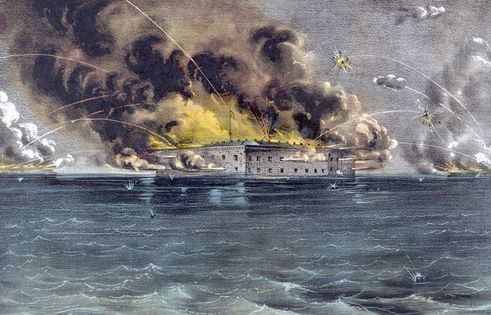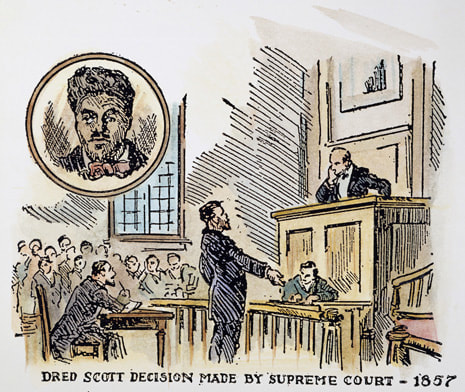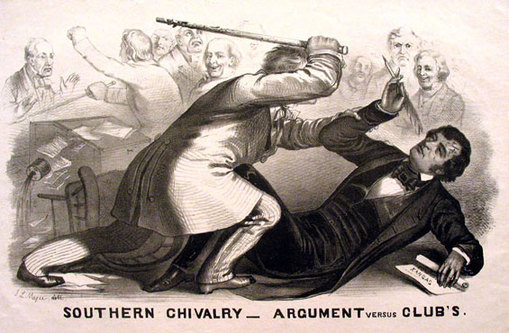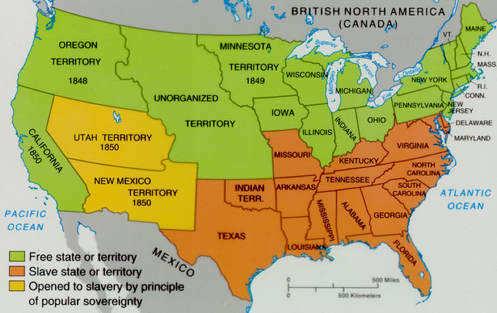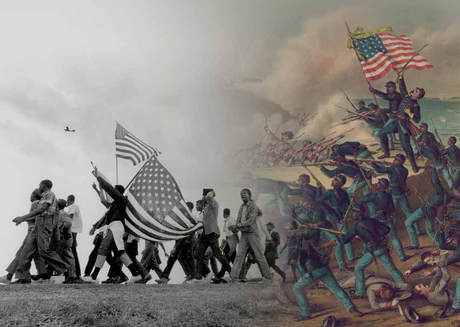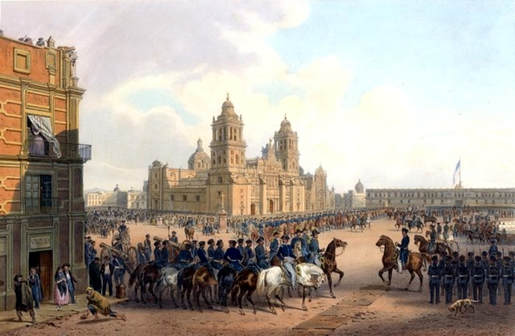|
Learning Target:
I can discuss the key military and political turning points of the Civil War. Critical Vocabulary: Nat Turner’s Rebellion, Underground Railroad, Harriett Tubman, “Fire-Eaters,” Stephen A. Douglas, Compromise of 1850, Fugitive Slave Act, Harriet Beecher Stowe, Uncle Tom’s Cabin, Ostend Manifesto, Kansas-Nebraska Act, New England Emigrant Aid Company, “Bleeding Kansas,” Republican Party, Dred Scott Decision, Abraham Lincoln, Freeport Doctrine, John Brown, Pottawatomie Creek, Lecompton Constitution, Harpers Ferry, Constitutional Union Party, Election of 1860, Crittenden Compromise, Confederate States of America, Jefferson Davis, First Inaugural Address, Fort Sumter Today's Agenda:
Homework: The Civil War Reading
0 Comments
Learning Target:
I can discuss the key military and political turning points of the Civil War. Critical Vocabulary: Nat Turner’s Rebellion, Underground Railroad, Harriett Tubman, “Fire-Eaters,” Stephen A. Douglas, Compromise of 1850, Fugitive Slave Act, Harriet Beecher Stowe, Uncle Tom’s Cabin, Ostend Manifesto, Kansas-Nebraska Act, New England Emigrant Aid Company, “Bleeding Kansas,” Republican Party, Dred Scott Decision, Abraham Lincoln, Freeport Doctrine, John Brown, Pottawatomie Creek, Lecompton Constitution, Harpers Ferry, Constitutional Union Party, Election of 1860, Crittenden Compromise, Confederate States of America, Jefferson Davis, First Inaugural Address, Fort Sumter Today's Agenda:
Homework: The Civil War Reading Learning Target:
I can discuss the key military and political turning points of the Civil War. Critical Vocabulary: Nat Turner’s Rebellion, Underground Railroad, Harriett Tubman, “Fire-Eaters,” Stephen A. Douglas, Compromise of 1850, Fugitive Slave Act, Harriet Beecher Stowe, Uncle Tom’s Cabin, Ostend Manifesto, Kansas-Nebraska Act, New England Emigrant Aid Company, “Bleeding Kansas,” Republican Party, Dred Scott Decision, Abraham Lincoln, Freeport Doctrine, John Brown, Pottawatomie Creek, Lecompton Constitution, Harpers Ferry, Constitutional Union Party, Election of 1860, Crittenden Compromise, Confederate States of America, Jefferson Davis, First Inaugural Address, Fort Sumter Today's Agenda:
Homework: The Civil War Reading Learning Target:
I can summarize the events that led to the Civil War, & I can evaluate the degree to which each contributed to the conflict. Critical Vocabulary: Nat Turner’s Rebellion, Underground Railroad, Harriett Tubman, “Fire-Eaters,” Stephen A. Douglas, Compromise of 1850, Fugitive Slave Act, Harriet Beecher Stowe, Uncle Tom’s Cabin, Ostend Manifesto, Kansas-Nebraska Act, New England Emigrant Aid Company, “Bleeding Kansas,” Republican Party, Dred Scott Decision, Abraham Lincoln, Freeport Doctrine, John Brown, Pottawatomie Creek, Lecompton Constitution, Harpers Ferry, Constitutional Union Party, Election of 1860, Crittenden Compromise, Confederate States of America, Jefferson Davis, First Inaugural Address, Fort Sumter Today's Agenda:
Homework: On the Brink of War Reading Learning Target:
I can summarize the events that led to the Civil War, & I can evaluate the degree to which each contributed to the conflict. Critical Vocabulary: Nat Turner’s Rebellion, Underground Railroad, Harriett Tubman, “Fire-Eaters,” Stephen A. Douglas, Compromise of 1850, Fugitive Slave Act, Harriet Beecher Stowe, Uncle Tom’s Cabin, Ostend Manifesto, Kansas-Nebraska Act, New England Emigrant Aid Company, “Bleeding Kansas,” Republican Party, Dred Scott Decision, Abraham Lincoln, Freeport Doctrine, John Brown, Pottawatomie Creek, Lecompton Constitution, Harpers Ferry, Constitutional Union Party, Election of 1860, Crittenden Compromise, Confederate States of America, Jefferson Davis, First Inaugural Address, Fort Sumter Today's Agenda:
Homework: On the Brink of War Reading Learning Target:
I can summarize the events that led to the Civil War, & I can evaluate the degree to which each contributed to the conflict. Critical Vocabulary: Nat Turner’s Rebellion, Underground Railroad, Harriett Tubman, “Fire-Eaters,” Stephen A. Douglas, Compromise of 1850, Fugitive Slave Act, Harriet Beecher Stowe, Uncle Tom’s Cabin, Ostend Manifesto, Kansas-Nebraska Act, New England Emigrant Aid Company, “Bleeding Kansas,” Republican Party, Dred Scott Decision, Abraham Lincoln, Freeport Doctrine, John Brown, Pottawatomie Creek, Lecompton Constitution, Harpers Ferry, Constitutional Union Party, Election of 1860, Crittenden Compromise, Confederate States of America, Jefferson Davis, First Inaugural Address, Fort Sumter Today's Agenda:
Homework: On the Brink of War Reading Learning Target:
I can summarize the events that led to the Civil War, & I can evaluate the degree to which each contributed to the conflict. Critical Vocabulary: Nat Turner’s Rebellion, Underground Railroad, Harriett Tubman, “Fire-Eaters,” Stephen A. Douglas, Compromise of 1850, Fugitive Slave Act, Harriet Beecher Stowe, Uncle Tom’s Cabin, Ostend Manifesto, Kansas-Nebraska Act, New England Emigrant Aid Company, “Bleeding Kansas,” Republican Party, Dred Scott Decision, Abraham Lincoln, Freeport Doctrine, John Brown, Pottawatomie Creek, Lecompton Constitution, Harpers Ferry, Constitutional Union Party, Election of 1860, Crittenden Compromise, Confederate States of America, Jefferson Davis, First Inaugural Address, Fort Sumter Today's Agenda:
Homework: On the Brink of War Reading Learning Target:
I can summarize the events that led to the Civil War, & I can evaluate the degree to which each contributed to the conflict. Critical Vocabulary: Nat Turner’s Rebellion, Underground Railroad, Harriett Tubman, “Fire-Eaters,” Stephen A. Douglas, Compromise of 1850, Fugitive Slave Act, Harriet Beecher Stowe, Uncle Tom’s Cabin, Ostend Manifesto, Kansas-Nebraska Act, New England Emigrant Aid Company, “Bleeding Kansas,” Republican Party, Dred Scott Decision, Abraham Lincoln, Freeport Doctrine, John Brown, Pottawatomie Creek, Lecompton Constitution, Harpers Ferry, Constitutional Union Party, Election of 1860, Crittenden Compromise, Confederate States of America, Jefferson Davis, First Inaugural Address, Fort Sumter Today's Agenda:
Homework: On the Brink of War Reading Learning Target:
I can evaluate the extent to which the nineteenth century belief in “Manifest Destiny” led to the growing sectional conflict in the United States. Critical Vocabulary: Manifest Destiny, John O'Sullivan, President James K. Polk, Oregon Territory, Treaty of 1818, Oregon Trail, Oregon Treaty of 1846, Stephen F. Austin, Antonio Lopez de Santa Anna, Texas Revolution, Battle of the Alamo, Goliad Campaign, General Sam Houston, Battle of San Jacinto, Election of 1844, James K. Polk, John Slidell, John C. Frémont, General Zachary Taylor, Mexican American War, “Spot Resolutions,” “Civil Disobedience,” Battle of Buena Vista, “Bear Flag Revolt,” General Winfield Scott, Treaty of Guadalupe-Hidalgo, Wilmot Proviso, “Popular Sovereignty,” Lewis Cass Today's Agenda:
Homework: Manifest Destiny Reading |
A life is not important except in the impact it has on other lives.
-Jackie Robinson AnnouncementsMay 21: No School
May 27: No School May 30: Last Day ResourcesArchives
May 2019
Visitors |
